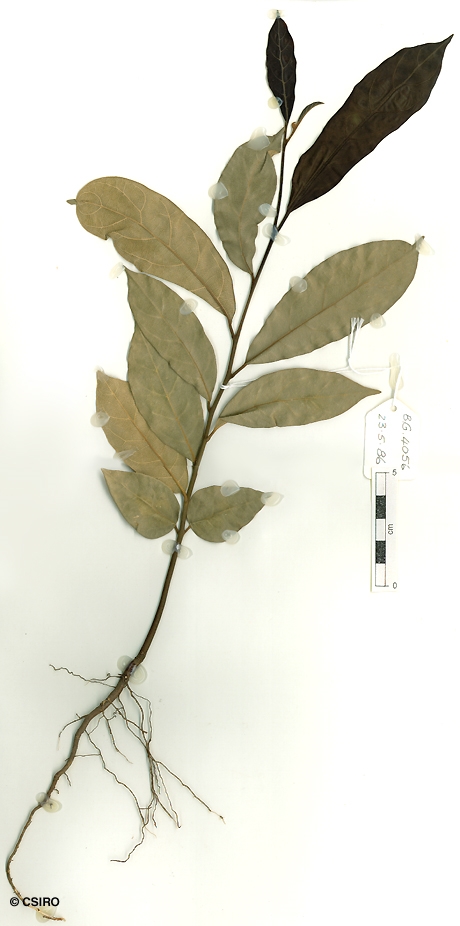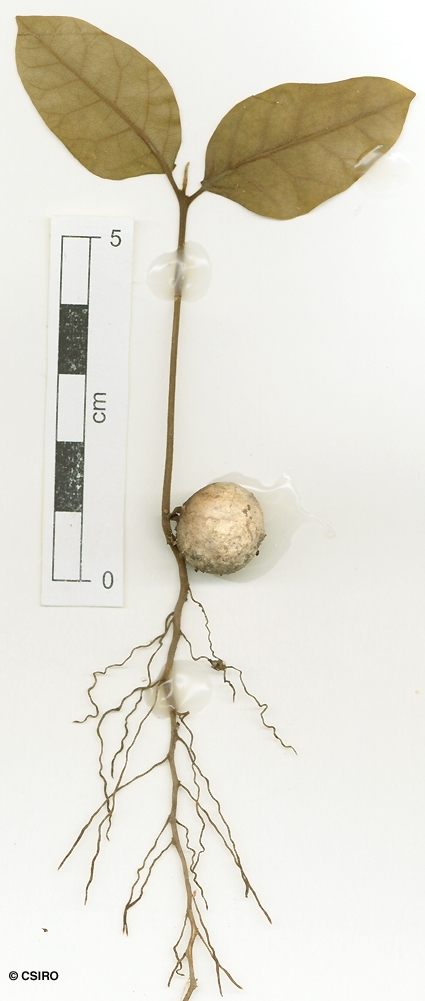Australian Tropical Rainforest Plants - Online edition
Cryptocarya cunninghamii Meisn.





Meissner, C.F. in Candolle, A.L.P.P. de (1864) Prodromus 15(1): 73. Type: Hunters River, Brunswick Bay, A. Cunningham 221; lecto: G-DC; iso: A, BM?, BRI, K. Lectoparatype: A. Cunninham 228. Fide Hyland (1989).
Cunningham's Laurel; Coconut Laurel; Cunningham's Coconut Laurel; Laurel, Cunningham's; Laurel, Coconut
Blaze odour resembling that of a mixture of apricots (Prunus armeniaca) and coconut (Cocos nucifera) and quite strong.
Twigs fluted when young and clothed in mainly straight, white or pale brown, mainly appressed hairs. Twigs when broken emit an odour like that of the blaze. Leaf blades about 6.5-13.5 x 2.4-5.6 cm, green on the underside, clothed in straight, white, appressed hairs when young but almost completely glabrous at maturity. Midrib depressed on the upper surface. Petioles channelled on the upper surface. Oil dots visible with a lens.
Fruits globular, about 13-15 x 13-16 mm, very aromatic when cut or broken. Cotyledons white or cream.
First pair of leaves ovate or elliptic, about 33-55 x 18-28 mm, green on the underside. At the tenth leaf stage: crushed leaves emit a strong coconut smell; petiole and midrib hairy on the upper surface of the leaf blade; oil dots small, difficult to see, visible only with a lens. Seed germination time 28 to 92 days.
Occurs in WA, NT, CYP and NEQ. Altitudinal range from sea level to 500 m. Grows as an understory tree in well developed coastal lowland rain forest and drier rain forest. Probably also occurs in New Guinea.
This species should be treated with caution. The fruits can cause burning in the mouth if any attempt is made to eat them. This species has little commercial value as it seldom grows large enough to produce millable logs. Wood specific gravity 0.75. Hyland (1989).
If sawdust comes into contact with the skin it can cause burning and allergic type reactions in some people.





